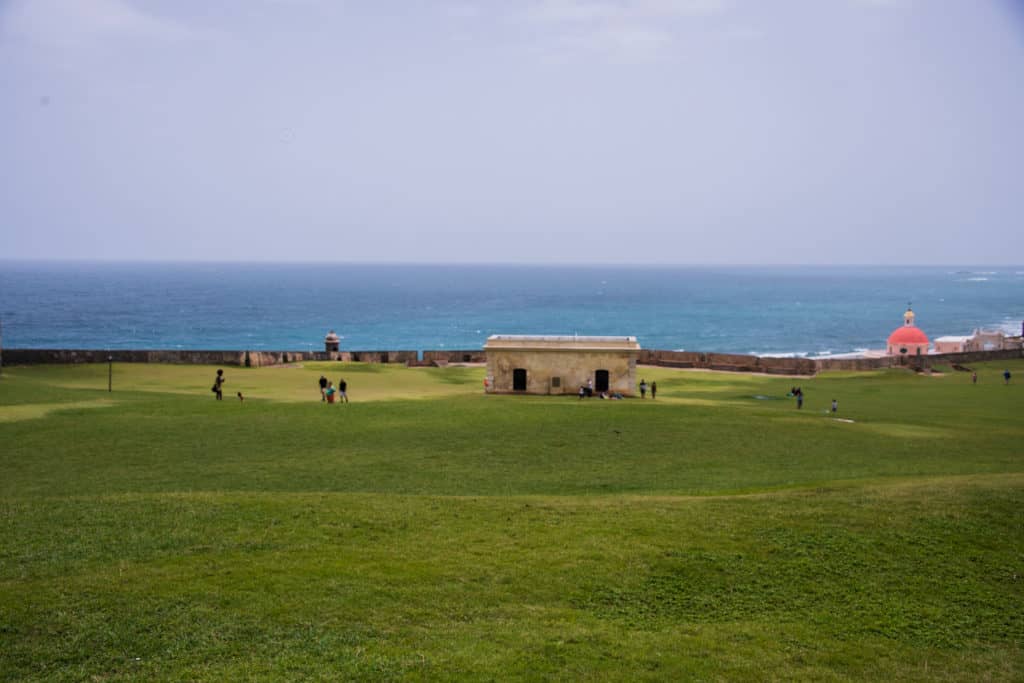The par 5 holes on a golf course can bring a ton of excitement or fear for a golfer.
The best golfers look forward to the par 5s as an opportunity to make a birdie or possibly an eagle. Par is almost a disappointment for the best golfers.
While for high handicap golfers, the par 5 can bring some fear. The extra length in the hole and possible out of bounds, water hazards or bunkers can bring some doubt into the swing and the mind of the golfer.
Whether you love par 5s or not, they can make for some magnificent golf holes! Some of the most famous golf holes are par 5s. Below, we will dive into some of the most frequently asked questions about par 5s and help you make better scores with our tips below!
How Many Par 5 Holes On A Golf Course?
The typical golf course has 4 par 5 golf holes. This number might vary on occasion and can have as few as 2 and as many as 6. However, par 5s take up more land than par 3s and 4s, so if a course architect is limited on space, they might have less par 5s than the standard 4.
On most golf courses you will find an average par of 72, which a typical setup of the following holes:
- 4 par 3s
- 10 par 4s
- 4 par 5s
Some courses only have a par 70 or 71 total and will have one or two less par 5s or an additional par 3. Ultimately, the course architect will utilize the land to build the course that fits the land they have to work with.

What Is A Par 5 On A Golf Course?
A par 5 is a hole where on average the golfer will take 3 shots to reach the green in regulation. Most par 5s will range in length from 450 on the short end to over 600 yards on the long end. Most par 5s will fall within the 500 to 600 yard range.
The best golfers are able to possibly hit the green in two shots and provide an opportunity for a 1 putt eagle or a 2 putt birdie. If nothing else, if they can get close to the green in 2 shots, they can leave a chip or pitch shot with the hopes of leaving a putt inside of 10 feet for their birdie putt.
For the average amateur golfer, the par 5 might mean more opportunity to get in trouble with the trees, bunkers or hazards.
Strategy on a par 5 plays a major role in the final score for the golfer as he or she has to navigate 4 par 5s over the course of the round.
The longest hitters on the PGA Tour, like to assume they will birdie every par 5 on the course which would put them at 4 under if they were to par everything else.
What Makes A Par 5 Difficult?
Course architects will frequently use a water hazard around or in front of the green. This is especially true on shorter par 5s, where the golfer might be able to reach in two. With the water hazard lurking around the green, the high risk, high reward shot comes into play bringing a high level of fun, challenge and entertainment for those playing the game and those watching.
The golfer must decide whether to try to hit the 200 yard plus shot into a green with a water hazard somewhere around the green or to lay up to a yardage they want to hit a wedge from and possibly hit it close from inside 100 yards.
The benefit of a par 5 is that even with a tee shot that ends up in the trees, a punch out that advances the ball around 125-175 yards can leave the golfer with a wedge into the green.
A second difficult factor with par 5s is the total length. If a par 5 is close to 600 yards and the wind happens to be in the face of the golfer, the holes becomes extra long and difficult. The overall length for some of the mid to high handicap golfers provides plenty of challenge.
When you start to add in potential bunkers, out of bounds and trees the golfer has plenty of opportunity to get into trouble. What is difficult from the par 3 where the ball is in hand and ready to hit your approach shot, the golfer must hit two decent shots to end up in the fairway with an approach shot that is reasonable.

What Is A Double Eagle In Golf?
On a par 5 when a golfer hits the ball in on the 2nd shot, the golfer has made a double eagle. A double eagle, sometimes referred to as an albatross is the most rare score in the game of golf. A golfer has around a 13,000 to one chance of making a 2 on a par 5 and even less if they are a short hitter that never reaches a par 5 in 2 shots.
The double eagle only can be made by the player that is able to reach a par 5 in 2 shots. Even on the PGA Tour the double eagles happens very infrequently compared to the hole in one on a par 3.
How To Make More Birdies on the Par 5s?
The golfer has two options for make more birdies on a par 5. They include:
- Gain speed and distance to make more greens reachable in two shots.
- Become a great wedge player and hit it inside of 10 feet frequently.
The good news is that both options are available to golfers. For those seeking to gain more distance, I would recommend checking out SuperSpeed Golf. This overspeed training system is designed to help you gain 5-8% in club head speed as early as the first training session.
This speed increase will become more permanent after about a month of training. This training only takes 15 minutes every other day. I was able to raise my swing speed with my driver from 98-101 on average to between 106-109 on average. The extra speed has brought more par 5s into reach on the 2nd shot.
Check current pricing on SuperSpeed Training System!
| Orignial Swing Speed | After 4-6 Weeks | New Carry Distance | Total Distance |
| 95 | 102 | 245 | 265 |
| 100 | 108 | 259 | 279 |
| 105 | 113 | 271 | 291 |
| 110 | 118 | 283 | 303 |
The other option is to become a great wedge player. This comes down to practice. The more time you can spend on the short range, the more feel and distance you will gain. I would also recommend making a distance chart with your wedges that can look like the one below. Measuring your distance with something like a SkyTrak is highly recommended:
| Club | Carry Distance (100%) | 90% | 80% |
| Pitching Wedge | 128 | 118 | 108 |
| Approach Wedge | 118 | 110 | 102 |
| SW Club | 105 | 97 | 91 |
| LW Club | 90 | 82 | 74 |
Famous Par 5 Holes
Here are some of the famous par 5 holes that really come to mind as great holes. What makes a great par 5? One where a low score such as an eagle can happen as well as the double bogey 7. They usually have a high risk, high reward design that includes water or some sort of hazard.
- Number 13 at Augusta National. This par 5 is reachable by most golfers in two during the Masters week. However, it has a creek that runs along the left side and in front of the green, leaving for a high risk, high reward 2nd shot. Did you know that Zach Johnson won a Masters with laying up on every par 5 over the four rounds of the tournament?
- Number 15 at Augusta National. This par 5 is once again reachable in two. The downhill approach shot to a wide, but narrow green brings the low number and high number into play. THe water that sits in front, in addition to the slope of the green makes this hole highly entertaining! Tiger Woods birdied this hole in the 2019 Masters as his playing partner Franciso Malinari hit his approach shot in the water. Sergio Garcia put several balls in the water the year after he was the champion of the Masters Tournament.
- Number 18 at Pebble Beach. This might be the most recognizable hole in golf with water down the left side and a tree in the middle of the fairway. Golfers head to this hole with high hopes, but fear missing the ball to the left and making a bogey or worse. If a golfer can hit a big drive, they are able to reach it in two, but must continue to guard against the pull or overdraw to the left.
There are many great par 5 holes throughout the world that bring about great challenges and great possibilities.

Final Thoughts: Par 5 Golf Holes
The par 5 golf hole is the most exciting hole in golf. The possibilities to make your round great or destroy your round exist and the golfer knows it! The pressure builds up and decisions have to be made. There is less strategy and overall major decisions on par 3s and par 4s, but the golfer must manage the 500 yard plus par 5, 4 times throughout the round of golf! It brings great theater when watching on television and great fun when playing!
I am an amateur golfer on a journey to get better, enjoy the game as often as possible and share my passion and knowledge with others. I have coached high school golfers at a high level and have a great passion for the game and want to give back. I enjoy learning about the golf swing and am currently studying to be a certified professional golf instructor. Join me in our journey to get better everyday. Thank you for reading!

